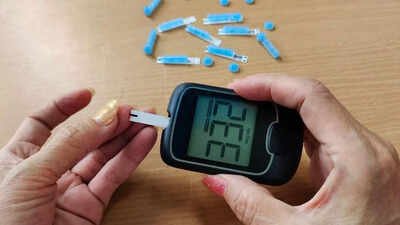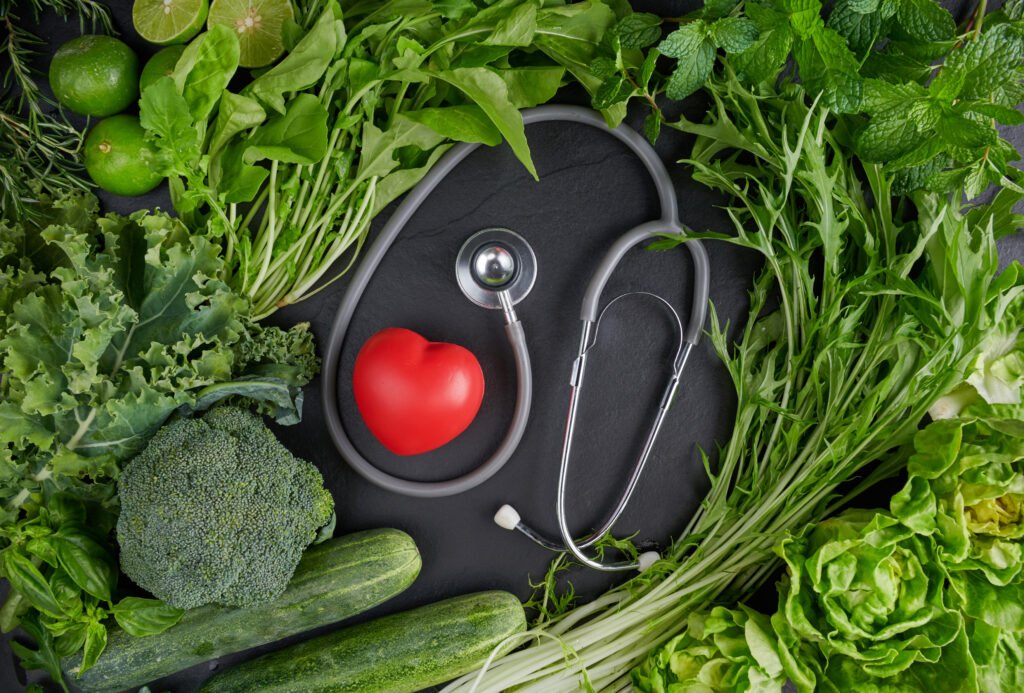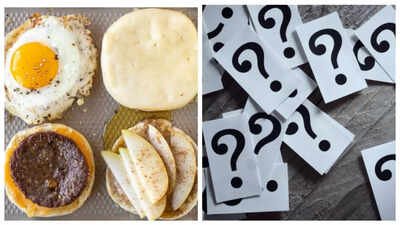Maintaining stable blood sugar levels is crucial for sustained energy, mood, and overall health. Breakfast, often hailed as the most important meal of the day, plays a pivotal role in setting the stage for the day’s metabolic performance. Consuming a breakfast that supports stable blood sugar can prevent energy crashes, reduce cravings, and enhance cognitive function. This article explores 11 of the best breakfast foods that help stabilize your blood sugar throughout the day, offering a balanced approach to nutrition and health.
Understanding the Importance of Blood Sugar Balance
Before diving into the best food options, it’s essential to understand why blood sugar balance is so critical. When you eat foods high in refined carbohydrates and sugars, your blood sugar levels spike rapidly. This surge is followed by a steep decline, leading to feelings of fatigue, irritability, and increased cravings for more sugary foods. Over time, frequent blood sugar spikes and dips can contribute to insulin resistance, type 2 diabetes, and other health problems.
A breakfast that supports stable blood sugar typically includes a combination of:
- High Fiber: Slows down the absorption of sugar into the bloodstream.
- Protein: Helps to keep you feeling full and provides a steady release of energy.
- Healthy Fats: Also contribute to satiety and slow the absorption of glucose.
- Low Glycemic Index (GI): Foods that release sugar slowly and steadily.
Incorporating these components into your morning meal can make a significant difference in how you feel and perform throughout the day. Recognizing Low Blood Sugar Symptoms Hypoglycemia Instantly
1. Oatmeal
Oatmeal is a classic breakfast choice and a powerhouse for blood sugar control. Its high fiber content, particularly beta-glucan, slows down glucose absorption and improves insulin sensitivity.
Benefits of Oatmeal:
- High in Soluble Fiber: Beta-glucan reduces cholesterol and stabilizes blood sugar.
- Complex Carbohydrates: Provides a slow and steady release of energy.
- Versatile: Can be combined with various toppings to enhance flavor and nutritional value.
Practical Tips:
- Choose Steel-Cut or Rolled Oats: These have a lower GI compared to instant oats.
- Add Protein and Fat: Mix in nuts, seeds, or a scoop of protein powder to further stabilize blood sugar.
- Avoid Added Sugars: Sweeten with berries, cinnamon, or a natural sugar substitute like stevia.
Example: A bowl of steel-cut oats topped with a handful of almonds, blueberries, and a sprinkle of cinnamon.
2. Eggs
Eggs are an excellent source of protein and healthy fats, making them an ideal breakfast food for maintaining stable blood sugar. Protein helps slow down the absorption of glucose and keeps you feeling full for longer.
Benefits of Eggs:
- High-Quality Protein: Contains all nine essential amino acids.
- Healthy Fats: Provides satiety and supports hormone production.
- Low Carbohydrate Content: Minimal impact on blood sugar levels.
Practical Tips:
- Include the Yolk: Contains important nutrients like choline and healthy fats.
- Combine with Fiber: Pair eggs with non-starchy vegetables like spinach or bell peppers.
- Prepare in Various Ways: Scrambled, poached, or in an omelet – all are beneficial.
Example: A spinach and feta omelet with a side of whole-grain toast.
3. Greek Yogurt
Greek yogurt is packed with protein and probiotics, contributing to gut health and stable blood sugar. It has a lower carbohydrate content compared to regular yogurt, making it a better choice for blood sugar control.
Benefits of Greek Yogurt:
- High in Protein: Keeps you feeling full and stabilizes blood sugar.
- Probiotics: Supports gut health, which can impact insulin sensitivity.
- Versatile: Can be used as a base for various breakfast bowls and smoothies.
Practical Tips:
- Choose Plain, Unsweetened Varieties: Avoid added sugars and artificial sweeteners.
- Add Fiber and Healthy Fats: Top with berries, nuts, or seeds.
- Combine with Protein: Mix in a scoop of protein powder for an extra boost.
Example: A bowl of plain Greek yogurt topped with chia seeds, raspberries, and a drizzle of almond butter.
4. Chia Seeds
Chia seeds are tiny but mighty when it comes to blood sugar control. They are rich in fiber, healthy fats, and antioxidants, all of which contribute to stable glucose levels.
Benefits of Chia Seeds:
- High Fiber Content: Slows down the absorption of sugar and keeps you feeling full.
- Healthy Fats: Provides sustained energy and supports hormone balance.
- Versatile: Can be added to various breakfast options.
Practical Tips:
- Create Chia Seed Pudding: Soak chia seeds in milk (dairy or non-dairy) overnight for a creamy breakfast.
- Add to Smoothies: Blend chia seeds into smoothies for added fiber and nutrients.
- Sprinkle on Oatmeal or Yogurt: Easily incorporates into your existing breakfast routine.
Example: Chia seed pudding made with almond milk, topped with sliced bananas and walnuts. What Is A Normal Blood Sugar Level Complete A1C Chart

5. Avocado Toast
Avocado toast has become a popular breakfast staple, and for good reason. Avocados are rich in healthy fats and fiber, which help to stabilize blood sugar levels and keep you feeling satisfied.
Benefits of Avocado Toast:
- Healthy Fats: Monounsaturated fats improve insulin sensitivity.
- High Fiber Content: Slows down glucose absorption.
- Nutrient-Dense: Provides essential vitamins and minerals.
Practical Tips:
- Choose Whole-Grain Bread: Opt for bread with a low glycemic index.
- Add Protein: Top with a poached egg or smoked salmon for added satiety.
- Season Well: Use spices like red pepper flakes, black pepper, and a squeeze of lemon juice for flavor.
Example: Whole-grain toast topped with mashed avocado, a poached egg, and a sprinkle of red pepper flakes. What Is An A1C Test Understanding Your Long Term Glucose Control
6. Berries
Berries, such as blueberries, strawberries, and raspberries, are packed with antioxidants and fiber, making them an excellent addition to any blood sugar-friendly breakfast.
Benefits of Berries:
- High in Antioxidants: Protects against oxidative stress and inflammation.
- Good Source of Fiber: Helps to slow down glucose absorption.
- Low Glycemic Index: Has a minimal impact on blood sugar levels.
Practical Tips:
- Add to Oatmeal or Yogurt: Provides natural sweetness and fiber.
- Blend into Smoothies: Enhances flavor and adds nutritional value.
- Eat on Their Own: A quick and healthy snack.
Example: A smoothie made with frozen berries, spinach, protein powder, and almond milk.
7. Nuts and Seeds
Nuts and seeds are excellent sources of healthy fats, fiber, and protein, all of which contribute to stable blood sugar. They also provide essential minerals and antioxidants.
Benefits of Nuts and Seeds:
- Healthy Fats: Improves insulin sensitivity and promotes satiety.
- High in Fiber: Slows down glucose absorption.
- Protein: Keeps you feeling full and provides a steady release of energy.
Practical Tips:
- Add to Oatmeal or Yogurt: Provides a crunchy texture and added nutrition.
- Make a Trail Mix: Combine various nuts and seeds for a convenient snack.
- Use Nut Butter: Spread almond or peanut butter on whole-grain toast or apple slices.
Example: A handful of mixed nuts (almonds, walnuts, and pecans) with a small apple.
8. Cottage Cheese
Cottage cheese is a protein-packed breakfast option that can help keep blood sugar levels stable. It’s also low in carbohydrates, making it a great choice for those watching their blood sugar intake.
Benefits of Cottage Cheese:
- High in Protein: Helps you feel full and satisfied.
- Low in Carbohydrates: Minimizes impact on blood sugar.
- Versatile: Can be paired with sweet or savory toppings.
Practical Tips:
- Combine with Fruit: Top with berries or sliced peaches for a sweet treat.
- Add Vegetables: Mix in chopped tomatoes, cucumbers, and herbs for a savory option.
- Sprinkle with Nuts and Seeds: Adds healthy fats and extra fiber.
Example: Cottage cheese topped with sliced strawberries and a sprinkle of chia seeds.
9. Whole-Grain Toast
Whole-grain toast provides a good source of fiber and complex carbohydrates, making it a better choice than white bread for blood sugar control.
Benefits of Whole-Grain Toast:
- High in Fiber: Slows down the absorption of sugar.
- Complex Carbohydrates: Provides sustained energy.
- Versatile: Can be topped with various healthy options.
Practical Tips:
- Choose 100% Whole-Grain Bread: Check the label to ensure it’s made from whole grains.
- Pair with Protein and Healthy Fats: Top with avocado, eggs, or nut butter.
- Avoid Sugary Spreads: Opt for healthier options like hummus or mashed avocado.
Example: Whole-grain toast topped with mashed avocado, sliced tomatoes, and a sprinkle of black pepper.
10. Protein Smoothies
Protein smoothies are a quick and convenient way to get a blood sugar-friendly breakfast. When made with the right ingredients, they can provide a balanced blend of protein, fiber, and healthy fats.
Benefits of Protein Smoothies:
- Convenient and Quick: Easy to prepare and consume.
- Customizable: Can be tailored to your specific nutritional needs.
- Nutrient-Dense: Provides a wide range of vitamins and minerals.
Practical Tips:
- Include a Protein Source: Add protein powder, Greek yogurt, or tofu.
- Add Fiber: Incorporate leafy greens, chia seeds, or flax seeds.
- Use Healthy Fats: Add avocado, nut butter, or coconut oil.
- Choose Low-Sugar Fruits: Stick to berries or green apples.
Example: A smoothie made with spinach, protein powder, almond milk, banana, and chia seeds.
11. Quinoa Porridge
Quinoa porridge is a nutritious and gluten-free alternative to oatmeal. It’s packed with protein, fiber, and essential amino acids, making it an excellent choice for stable blood sugar.
Benefits of Quinoa Porridge:
- High in Protein: Provides a sustained release of energy.
- Good Source of Fiber: Slows down glucose absorption.
- Gluten-Free: Suitable for those with gluten sensitivities.
Practical Tips:
- Cook Quinoa in Milk (Dairy or Non-Dairy): Creates a creamy texture.
- Add Sweeteners Sparingly: Use natural options like cinnamon, berries, or stevia.
- Top with Nuts and Seeds: Provides healthy fats and added fiber.
Example: Quinoa porridge cooked in almond milk, topped with sliced peaches, walnuts, and a sprinkle of cinnamon.
Incorporating These Foods into Your Daily Routine
Integrating these blood sugar-friendly breakfast foods into your daily routine doesn’t have to be complicated. The key is to plan ahead and make simple swaps to your existing breakfast habits. Here’s a practical guide:
- Meal Prep: Prepare overnight oats, chia seed pudding, or hard-boiled eggs in advance.
- Stock Up: Keep your pantry and refrigerator stocked with healthy ingredients like oats, nuts, seeds, berries, and Greek yogurt.
- Experiment: Try different combinations and recipes to find what you enjoy.
- Listen to Your Body: Pay attention to how different foods affect your blood sugar levels and adjust your diet accordingly.
Lifestyle Factors Complementing a Blood Sugar-Friendly Diet
While choosing the right breakfast foods is essential, it’s also crucial to consider other lifestyle factors that impact blood sugar levels. These include:
Regular Exercise
Physical activity improves insulin sensitivity and helps to regulate blood sugar. Aim for at least 30 minutes of moderate-intensity exercise most days of the week.
Stress Management
Chronic stress can elevate blood sugar levels. Practice stress-reducing techniques like meditation, yoga, or deep breathing exercises.
Adequate Sleep
Insufficient sleep can disrupt hormone balance and impair insulin sensitivity. Aim for 7-8 hours of quality sleep per night.
Hydration
Drinking plenty of water helps to regulate blood sugar and prevent dehydration, which can exacerbate blood sugar imbalances.
Conclusion
Starting your day with a blood sugar-friendly breakfast sets the tone for sustained energy, improved mood, and better overall health. By incorporating the 11 best breakfast foods discussed in this article—oatmeal, eggs, Greek yogurt, chia seeds, avocado toast, berries, nuts and seeds, cottage cheese, whole-grain toast, protein smoothies, and quinoa porridge—you can effectively manage your blood sugar levels and reap the numerous benefits of a balanced and nutritious diet. Remember to combine these food choices with other healthy lifestyle habits to optimize your blood sugar control and overall well-being.







